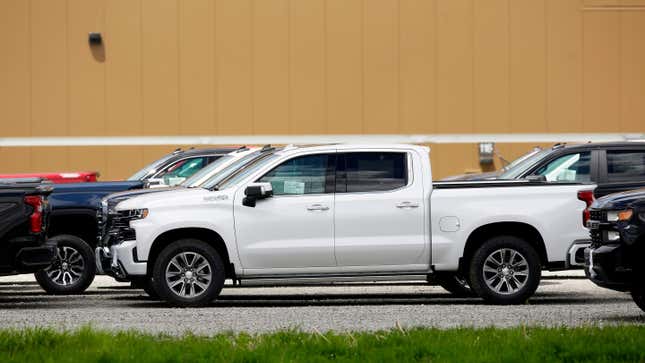
There is a thing that is obvious, that you can see with your own eyes every day — that Americans are buying lots of trucks and SUVs; in fact the vast majority of new car purchases are trucks and SUVs — but then you read a stat about it, and it becomes astounding all over again. The stat is this, via JD Power: That in October 2021, over 80 percent of estimated new vehicle sales in the U.S. were SUV and trucks for the first time ever. Over 80 percent!
That number continued in November and December and is on pace to do so again in January. For the entire year in 2021, the number was 78.5 percent, a number that has steadily ticked up for the last decade. In 2010, for example, only 52.7 percent of new-vehicle sales were trucks and SUVs, the rest cars, or almost an even split. In 2013, that number was 52.1 percent, according to numbers provided by JD Power. In 2014, it ticked up to 54.6 percent, and hasn’t looked back since.
See for yourself, in the following table of new-vehicle sales in the US, compiled by JD:

“Here is ... an annual split back to 2010,” says Tyson Jominy, vice president of data and analytics at JD Power. “It shows the overall decline in car sales since the mid-2010s, but even since Covid, the decline has accelerated.”
It is, in many ways, a sort of chicken-or-egg situation, as an automaker like Ford doesn’t even sell regular cars anymore, and Chevy only sells two. This is because Americans have preferred SUVs, though, conveniently, SUVs are also more profitable for automakers since they tend to cost more than, say, a Chevy Malibu.
Also, longer and longer car loans in recent years have lowered car payments and perhaps convinced many people that they can buy more car than they otherwise would be able to afford. Further, most automakers spent the last year prioritizing production of their highest-profit vehicles amid the chip shortage, which in most cases meant: SUVs and trucks. In recent years, gas has also been relatively cheap, even as it has ticked up since the pandemic.
For all of these reasons, the rise of SUVs and trucks can be explained if not completely understood, for those of us who grew up in an era (the ‘90s) when one of the most desirable vehicles was a Honda Accord. Eighty percent, man!




